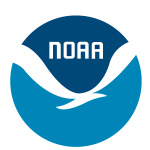- Industry: Government
- Number of terms: 30456
- Number of blossaries: 0
- Company Profile:
NOAA Coral Reef Conservation Program, National Oceanic and Atmospheric Administration, U.S. Department of Commerce
The sudden sinking or gradual downward settling of the Earth's surface with little or no horizontal motion.
Industry:Fishing
Fishes with a calcified hard skeleton and belonging to Class Osteichthyes; includes most fish species except sharks, rays, skates, hagfish, and lampreys.
Industry:Fishing
With respect to a particular ecosystem, any species, including its seeds, eggs, spores, or other biological material capable of propagating that species, that is not native to that ecosystem. Introduced species often compete with and cause problems for native species. Introduced species are also called exotic, nonnative, and alien species.
Industry:Fishing
In oceanographic terms, a region of sharp gradient in temperature or salinity, indicating a transition between two current systems or water masses. Intersection between the thermocline (temperature discontinuity) or halocline (salinity discontinuity) and the surface. Fronts are usually associated with high biological activity, high abundance of highly migratory resources (e.g. tunas), and are actively sought as fishing areas. Fronts can be monitored by satellite remote-sensing.
Industry:Fishing
The condition resulting from the presence of suspended particles in the water column which attenuate or reduce light penetration.
Industry:Fishing
The term includes a commercial, recreational, and indigenous fisher; fish watcher (scuba diver); and a member of the community. What constitutes a "significant user interest" must be decided on in a case-by-case basis.
Industry:Fishing
The extent to which a resource, if managed properly, can be depended on to provide a reasonably constant yield. An unreliable resource is one that may fail suddenly due to causes not obviously related to fishing.
Industry:Fishing
Group of organisms eating resources from a similar level in the energy cycle.
Industry:Fishing
The procedure of maintaining methods and equipment as constant as possible. Without standardization one cannot determine whether measurements of yearly differences in relative abundance are caused by actual fluctuations in stock abundance or by differences in the measurement procedure used. The lack of standardization is one reason why surveys using different commercial fishing vessels in different years do not produce comparable information. For example, if two vessels of different horsepower are used in separate years, the results cannot be compared unless vessel mensuration experiments are performed. This would involve a comparison of the two vessels' catches to determine the influence of their fishing power on the size of the catch, and a determination of a correction factor.
Industry:Fishing
